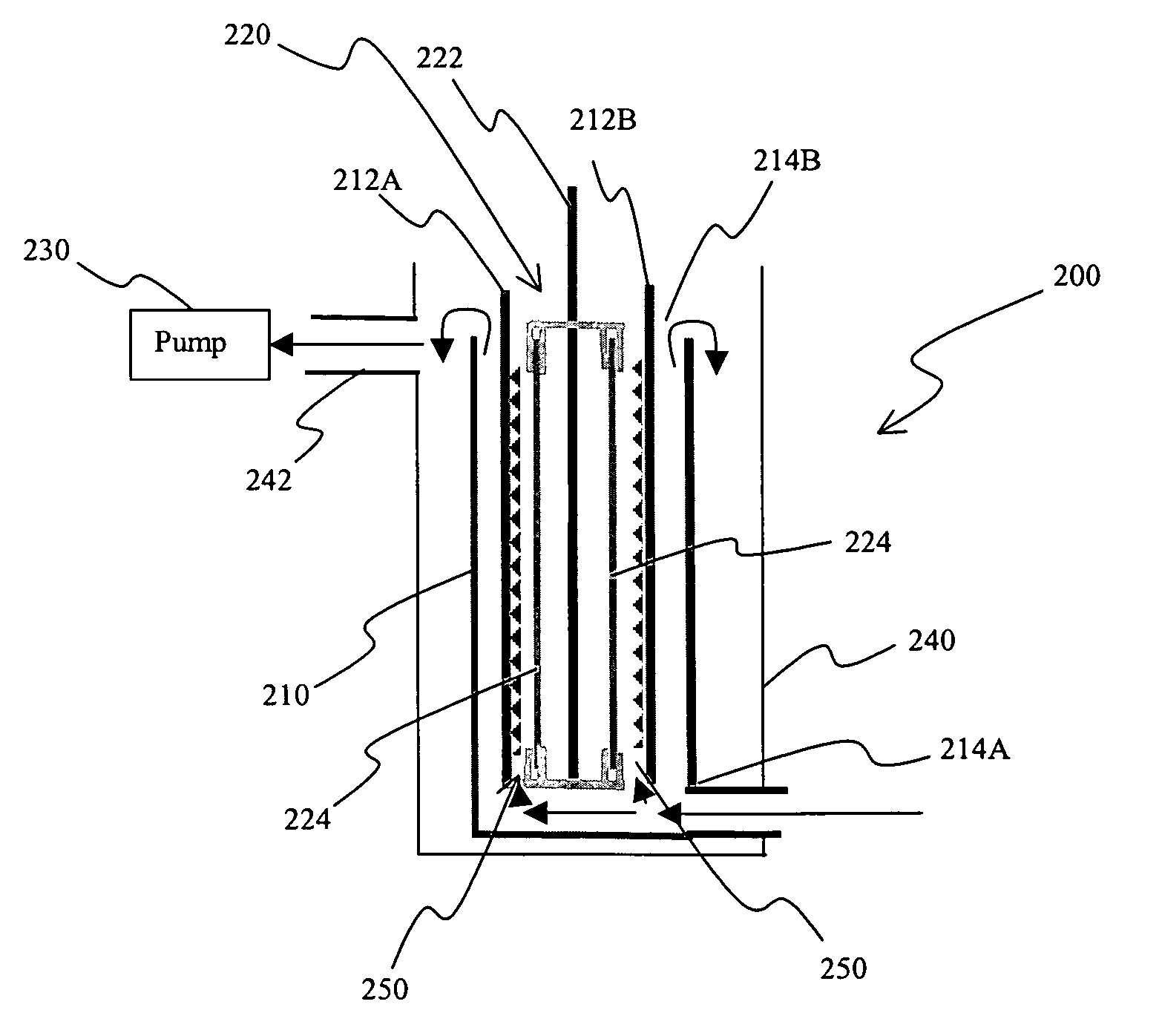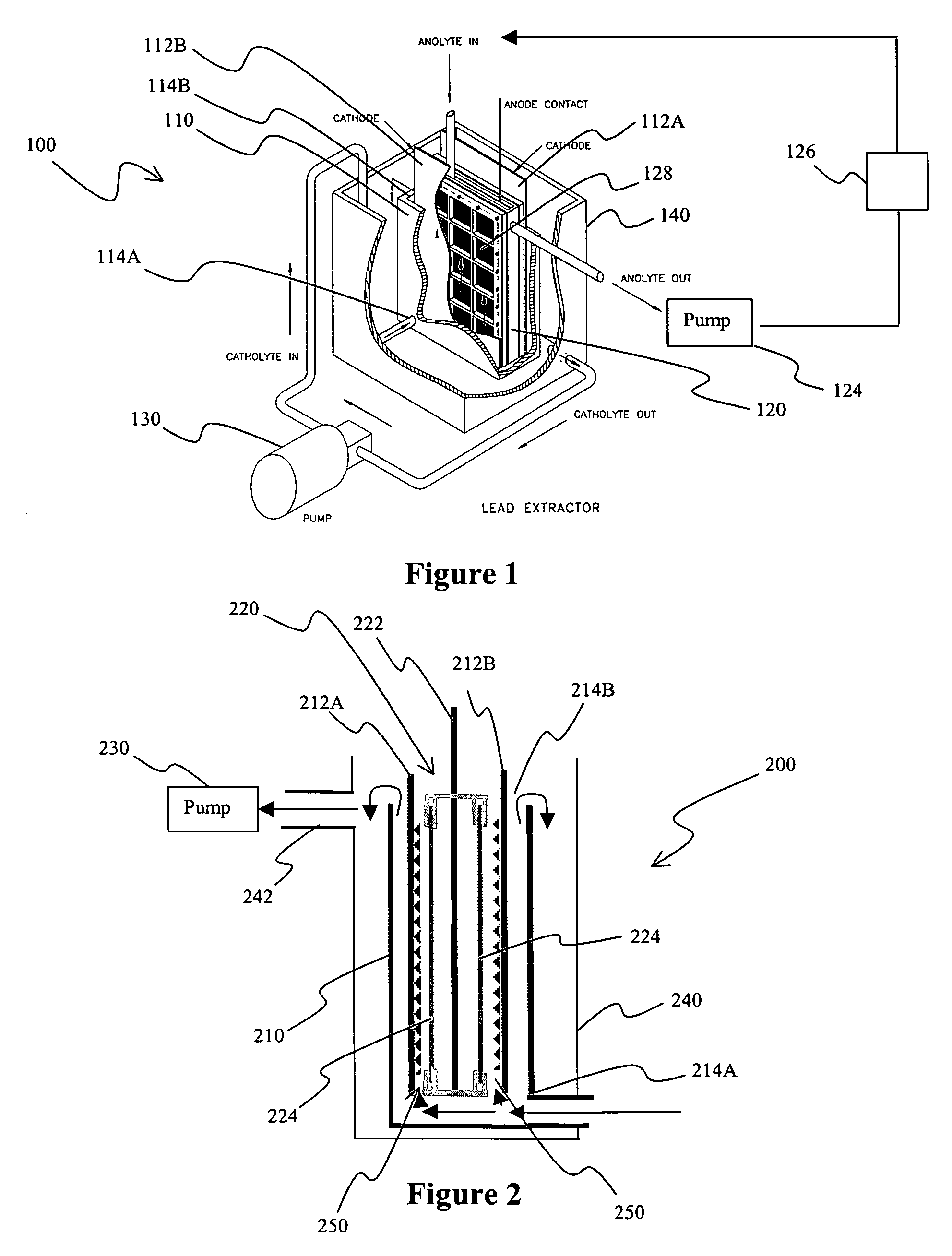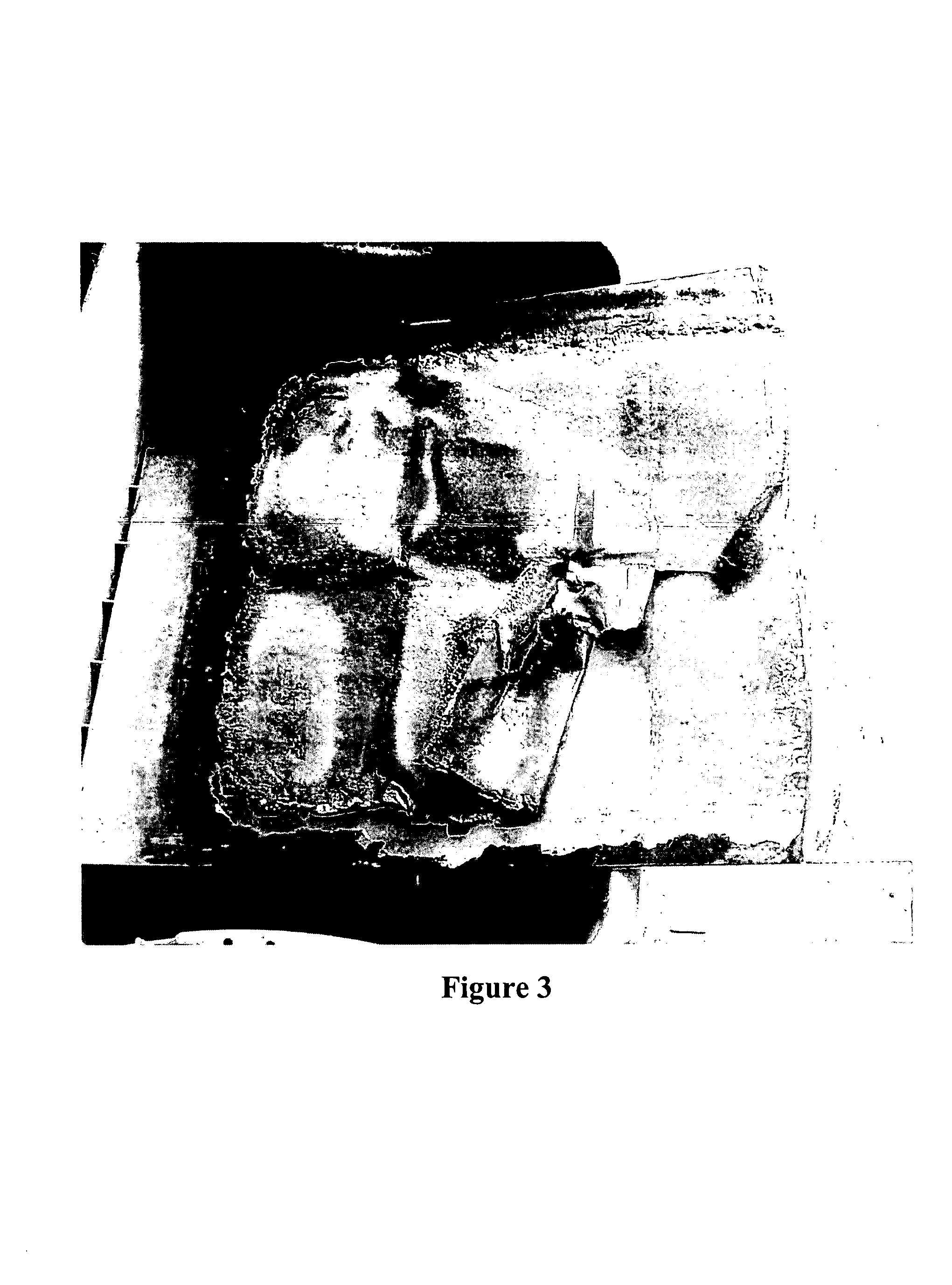Configurations and methods of electrochemical lead recovery from contaminated soil
- Summary
- Abstract
- Description
- Claims
- Application Information
AI Technical Summary
Benefits of technology
Problems solved by technology
Method used
Image
Examples
example 1
Recovery of Lead from Contaminated Soil
[0063]The inventors tested a configuration in which lead-contaminated soil was placed in large bins and washed with an electrolyte containing EDTA to form the catholyte from which the lead was subsequently recovered in a electrolytic cell. The treated electrolyte was then used to re-wash the lead-contaminated soil, thereby removing more lead from the contaminated soil. The process of soil-wash followed by recovery of lead in the electrolytic cell was repeated as long as necessary to reduce the concentration of lead in the soil to the desired value.
[0064]The electrolytic cell was designed as a classical tank electrolyzer with a pumped flow system as depicted in FIG. 1 to ensure generate high mass transfer conditions in the cell. Previous experiments indicated that a relatively low flow would have reduced the current at which one can plate smooth film deposits so that the lead could easily be harvested from the cathodes.
[0065]The anode, here a le...
example 2
Reduction of Lead-EDTA & Copper-EDTA Complexes with Concurrent Oxidation of EDTA
[0072]A four-chamber electrolytic cell comprising two carbon felt electrodes, one used as anode the other as a cathode, was assembled. The carbon-felt electrodes were fabricated by attaching a porous carbon felt onto a titanium mesh surface. A NAFION™ ion-exchange membrane was used to separate the two halves of the cell. The cell was configured so that the electrolyte was pumped from a reservoir into the chamber in front of the electrode, (i.e. between the electrode and the membrane), flowed through the porous electrode, into the chamber behind the electrode, and then returned to the reservoir.
[0073]One kg of soil containing about 1600 mg / kg lead and other metals (primarily copper, zinc and iron) was stirred with 10 liters of a 0.1 M EDTA solution and mixed for 24 hours. The slurry was filtered to separate the soil from the treatment liquor. The soil was washed with three pore volumes of water and draine...
example 3
Stabilization of Lead in Treated Soil
[0077]A final requirement is to remove or immobilize any remaining lead in the soil such that it will pass any leaching process after the remediation process is complete. The following example demonstrates this by the use of ferric chloride solution. This stabilizer was chosen because iron is beneficial in soils and is benign. Therefore, a suitable method of immobilizing lead ions in soil previously treated with a complexing agent will comprise a step of admixing a ferric chloride containing solution to the soil. Further, some iron is lost in the process and should be replaced. Other washing agents have been used successfully, hypochlorite, lignin sulfate, calcium chloride, calcium sulfide etc. The iron chloride example is given here to illustrate the method.
[0078]Soil containing about 1600 mg / kg lead and other metals (primarily copper, zinc and iron) was stirred with a 0.1 M EDTA solution at 10% solids and mixed for 24 hours. The slurry was filt...
PUM
| Property | Measurement | Unit |
|---|---|---|
| Fraction | aaaaa | aaaaa |
| Fraction | aaaaa | aaaaa |
| Concentration | aaaaa | aaaaa |
Abstract
Description
Claims
Application Information
 Login to View More
Login to View More - R&D
- Intellectual Property
- Life Sciences
- Materials
- Tech Scout
- Unparalleled Data Quality
- Higher Quality Content
- 60% Fewer Hallucinations
Browse by: Latest US Patents, China's latest patents, Technical Efficacy Thesaurus, Application Domain, Technology Topic, Popular Technical Reports.
© 2025 PatSnap. All rights reserved.Legal|Privacy policy|Modern Slavery Act Transparency Statement|Sitemap|About US| Contact US: help@patsnap.com



